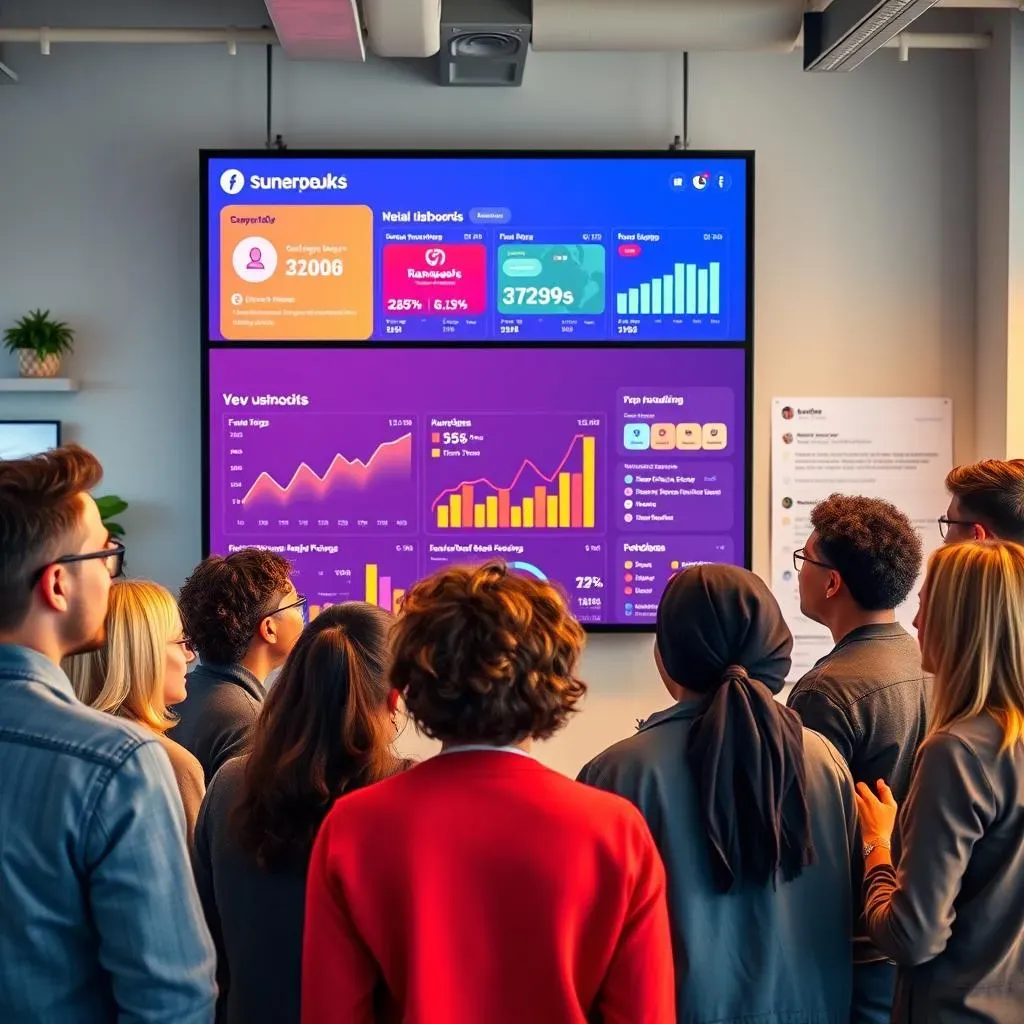Table of Contents
In today's digital age, social media is no longer just a platform for sharing personal updates; it's a powerful tool with the potential to revolutionize how non-profits raise funds and connect with their communities. This article serves as your comprehensive guide to mastering the art of "how to use social media for non-profit fundraising." We'll navigate the process step-by-step, starting by helping you identify the social media platforms best suited to your organization's needs and target audience. Then, we'll dive into the creation of compelling content – the kind of posts, videos, and stories that will not only capture attention but also inspire action. Next, we'll explore proven strategies for launching and executing highly effective social media fundraising campaigns. Finally, we'll equip you with the knowledge to measure your success, analyze your results, and refine your approach for even greater impact. Prepare to transform your fundraising strategies and unlock the extraordinary potential of social media to amplify your non-profit's mission and reach.
Choosing the Right Social Media Platforms for NonProfit Fundraising

Choosing the Right Social Media Platforms for NonProfit Fundraising
Picking the right social media platforms is like choosing the perfect fundraising event – you need to consider your audience and what will resonate with them. Don't spread yourself too thin trying to be everywhere at once! Focus your energy where it'll have the most impact. For example, if your nonprofit supports senior citizens, Facebook might be a better fit than TikTok. Older generations are more likely to be active on Facebook, while TikTok skews younger. Think about who you're trying to reach and where they spend their time online. A strong online presence requires a targeted strategy, not a shotgun approach. Knowing your audience is key to effective fundraising, no matter the platform.
- Facebook: Great for broad reach and established communities. It offers robust fundraising tools like donation buttons and birthday fundraisers. Learn more about engaging donors on Facebook.
- Instagram: Ideal for visually appealing content and storytelling. Use high-quality images and videos to showcase your work's impact. Check out these success stories for inspiration!
- Twitter: Perfect for quick updates, sharing news, and engaging in real-time conversations. Use relevant hashtags to increase visibility. Consider current trends to stay ahead of the curve.
- YouTube: A powerful platform for longer-form content, such as impact videos or interviews with beneficiaries. This allows you to connect deeply with your audience. Consider effective storytelling techniques.
Remember, you don't have to be everywhere. Start with one or two platforms that best align with your audience and resources. Mastering those before expanding is far more effective than spreading yourself too thin. Effective fundraising takes planning and strategy. Don't forget to check out best practices for non-profit fundraising.
Platform | Strengths | Best For |
|---|---|---|
Wide reach, fundraising tools | Broad audience engagement | |
Visual storytelling | Showcasing impact | |
Real-time updates | News and quick announcements | |
YouTube | Long-form content | Deep audience connection |
Creating Engaging Content for NonProfit Social Media Fundraising

Creating Engaging Content for NonProfit Social Media Fundraising
Show, Don't Just Tell: The Power of Visuals
Forget long, rambling texts! People scroll through social media, they don't read novels. Prioritize stunning visuals: photos and videos that instantly communicate your non-profit's impact. Think heartwarming images of beneficiaries, short clips showing your team in action, or engaging graphics summarizing your accomplishments. A picture is worth a thousand words, and on social media, it's worth even more. Make sure your visuals are high-quality and emotionally resonant. Think about the feeling you want to evoke. Joy? Hope? Urgency? Let your visuals do the talking. Need help with storytelling? Check out our guide on effective storytelling.
- Use high-resolution images.
- Create short, impactful videos.
- Design eye-catching graphics.
The Human Touch: Sharing Real Stories
Numbers are important, but they don't tug at the heartstrings like a compelling human story. Feature real people who have been directly affected by your non-profit's work. Share their journeys, their challenges, and their triumphs. These personal narratives create a powerful connection with your audience, making them more likely to donate. Remember, people give to people, not just causes. Highlighting your impact on real lives is essential. For more inspiration, check out our success stories page.
Content Type | Impact | Example |
|---|---|---|
Before & After Photos | Showcases tangible impact | Photos of a renovated community center |
Video Testimonials | Connects with viewers emotionally | A beneficiary sharing their experience |
Infographics | Communicates data clearly | A graphic showing donation impact |
Keep it Concise and Actionable: Calls to Action
Every post needs a clear call to action. What do you want your audience to do? Donate? Volunteer? Share your post? Make it crystal clear. Use strong verbs and concise language. Don't bury your call to action at the bottom of a lengthy caption. Make it prominent and easy to find. A well-placed call to action is the difference between a passive viewer and an active supporter. Remember to always make it easy for people to donate; a simple link in your bio or a donate button on your posts makes a huge difference. Want more tips on engaging donors? Learn more about engaging donors with our guide.
Running Successful Social Media Fundraising Campaigns

Running Successful Social Media Fundraising Campaigns
So, you've got your platforms picked and your content's looking fire. Now, let's talk strategy. Running a successful social media fundraising campaign isn't about throwing spaghetti at the wall and hoping something sticks; it's about a well-defined plan, clear goals, and consistent effort. Think of it like building a house – you need a solid foundation (your strategy), strong walls (consistent posting), and a stunning roof (a captivating campaign finale). Before you even launch, define your goals: How much money do you want to raise? What are your key performance indicators (KPIs)? Having clear goals helps you measure success and adjust your approach as needed. This is crucial for effective fundraising.
- Set clear, measurable goals.
- Create a detailed campaign timeline.
- Develop engaging content calendar.
Next, create a killer content calendar. Don't just wing it! Plan your posts in advance. This ensures consistency and helps you build momentum. Mix things up – use photos, videos, stories, and live streams. Keep your audience engaged and coming back for more! A consistent posting schedule is key to keeping your audience engaged and informed about your fundraising efforts. Consider using a social media scheduling tool to help streamline this process. For more tips on planning your fundraising events, check out our guide on planning a fundraising gala.
Campaign Stage | Action Items | Key Metrics |
|---|---|---|
Pre-Launch | Goal setting, content creation | Audience engagement, reach |
Launch | Initial posts, influencer outreach | Website traffic, donations |
Mid-Campaign | Content updates, donor engagement | Conversion rates, social shares |
Post-Campaign | Thank you messages, reporting | Total donations, ROI |
Don't forget the power of peer-to-peer fundraising. Encourage your supporters to become fundraisers themselves by sharing your campaign with their networks. They can set up their own fundraising pages, and you can provide them with resources and support. This expands your reach exponentially. Learn more about the power of peer-to-peer fundraising and how it can significantly boost your fundraising efforts.
Measuring the Success of Your NonProfit Social Media Fundraising Efforts and How to Use Social Media for NonProfit Fundraising
Understanding Your Key Performance Indicators (KPIs)
Don't just look at the total dollars raised; dig deeper! What truly matters is understanding your key performance indicators (KPIs). These are the specific metrics that show how effectively your social media strategy is driving donations. Think about things like website clicks from social media posts, the number of people who shared your campaign, and the conversion rate from clicks to donations. Tracking these KPIs provides invaluable insights into what's working and what's not. You can then adjust your strategy accordingly to maximize your impact. For example, if you notice low conversion rates, you might need to refine your call to action or make the donation process easier. Need help with optimizing your fundraising strategy? Check out our guide on non-profit fundraising best practices.
- Website clicks from social media
- Social media shares
- Donation conversion rates
- Reach and engagement
Leveraging Social Media Analytics
Most social media platforms offer built-in analytics dashboards. These dashboards provide a wealth of information about your audience, their engagement with your content, and the overall performance of your campaigns. Take advantage of these tools! They're free and incredibly valuable. Analyze your data regularly to identify trends, understand what resonates with your audience, and optimize your future campaigns. For instance, you might discover that videos perform better than static images, or that posts published at certain times of day generate more engagement. This data-driven approach ensures that your fundraising efforts are as efficient and effective as possible. For more insights into successful strategies, explore our non-profit fundraising success stories.
Metric | Description | How to Improve |
|---|---|---|
Reach | Number of unique users seeing your content | Use relevant hashtags, target ads |
Engagement | Likes, comments, shares, etc. | Create engaging content, interact with users |
Website Clicks | Number of clicks from social media to your website | Use clear calls to action, trackable links |
Donations | Number of donations received | Optimize donation process, compelling messaging |
Refining Your Strategy Based on Data
Analyzing your data is only half the battle; the other half is using that information to improve your strategy. Don't just collect data; act on it! If you notice that certain types of content perform better than others, focus on creating more of that type of content. If you identify areas where your audience is disengaging, adjust your approach. Perhaps you need to change your messaging, improve your visuals, or make the donation process more user-friendly. Regularly reviewing and refining your strategy ensures that your social media fundraising efforts are always evolving and improving. Remember, consistent improvement is key to long-term fundraising success. For more information on refining your donor relationships, check out our guide on retaining donors.
